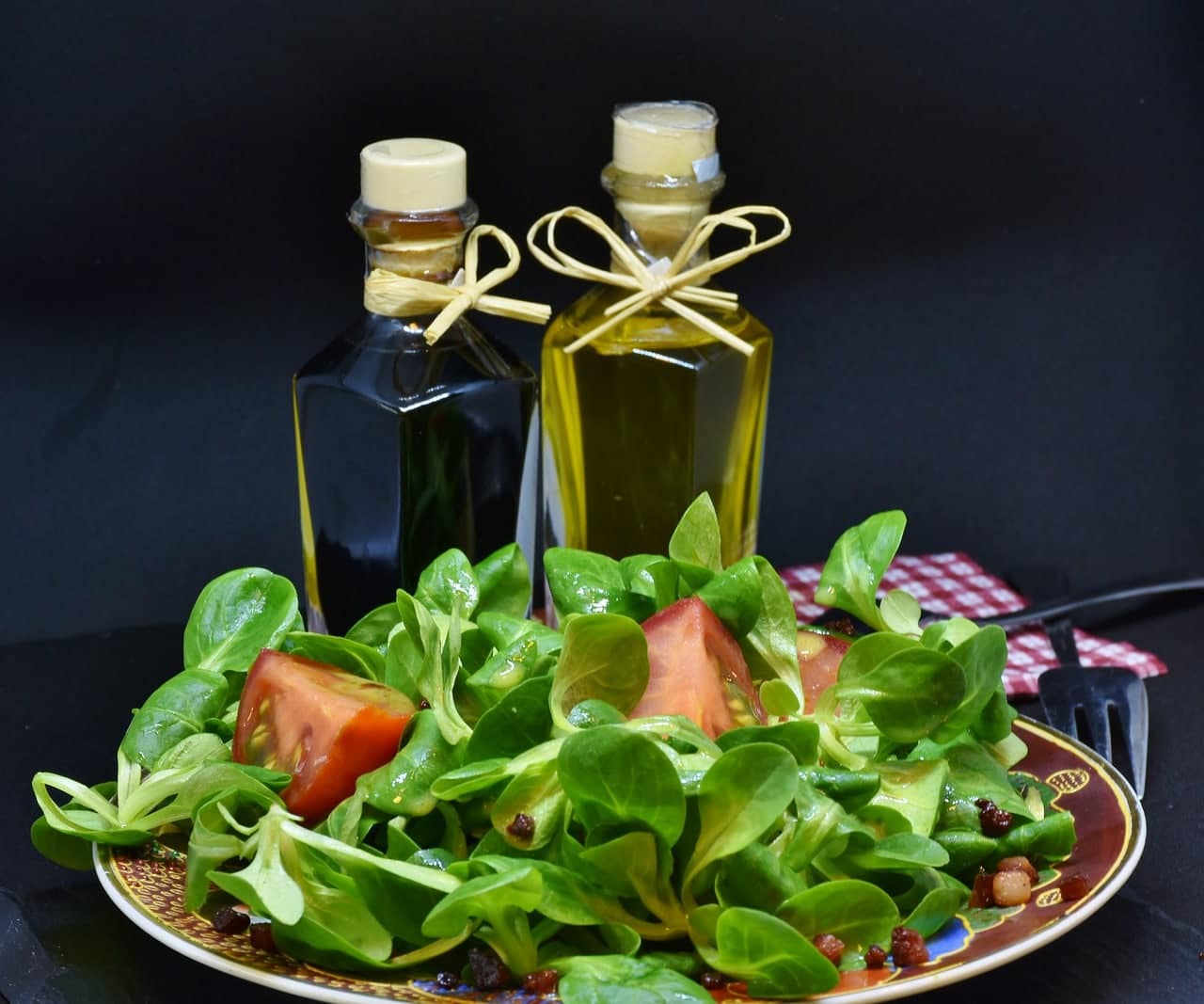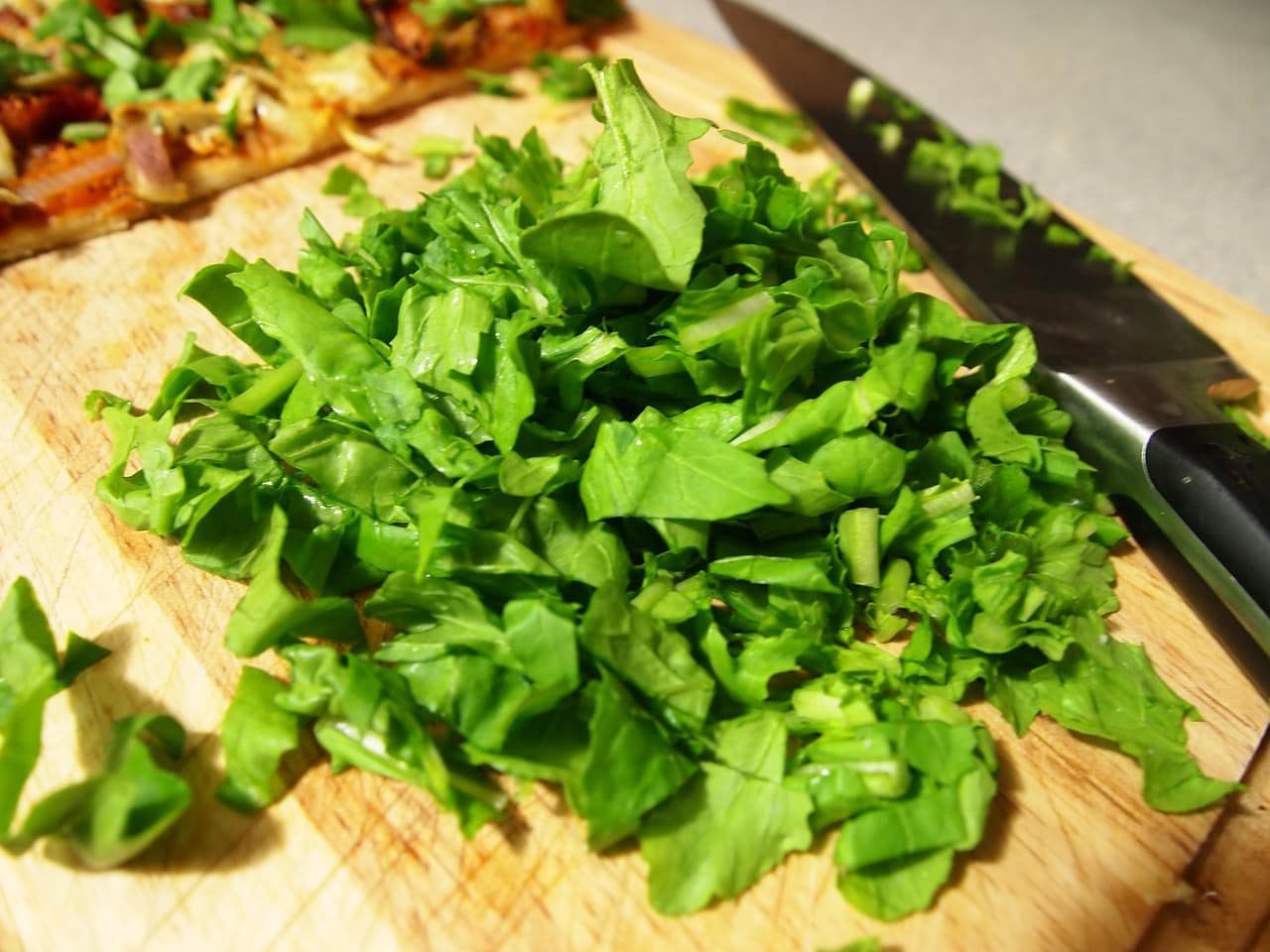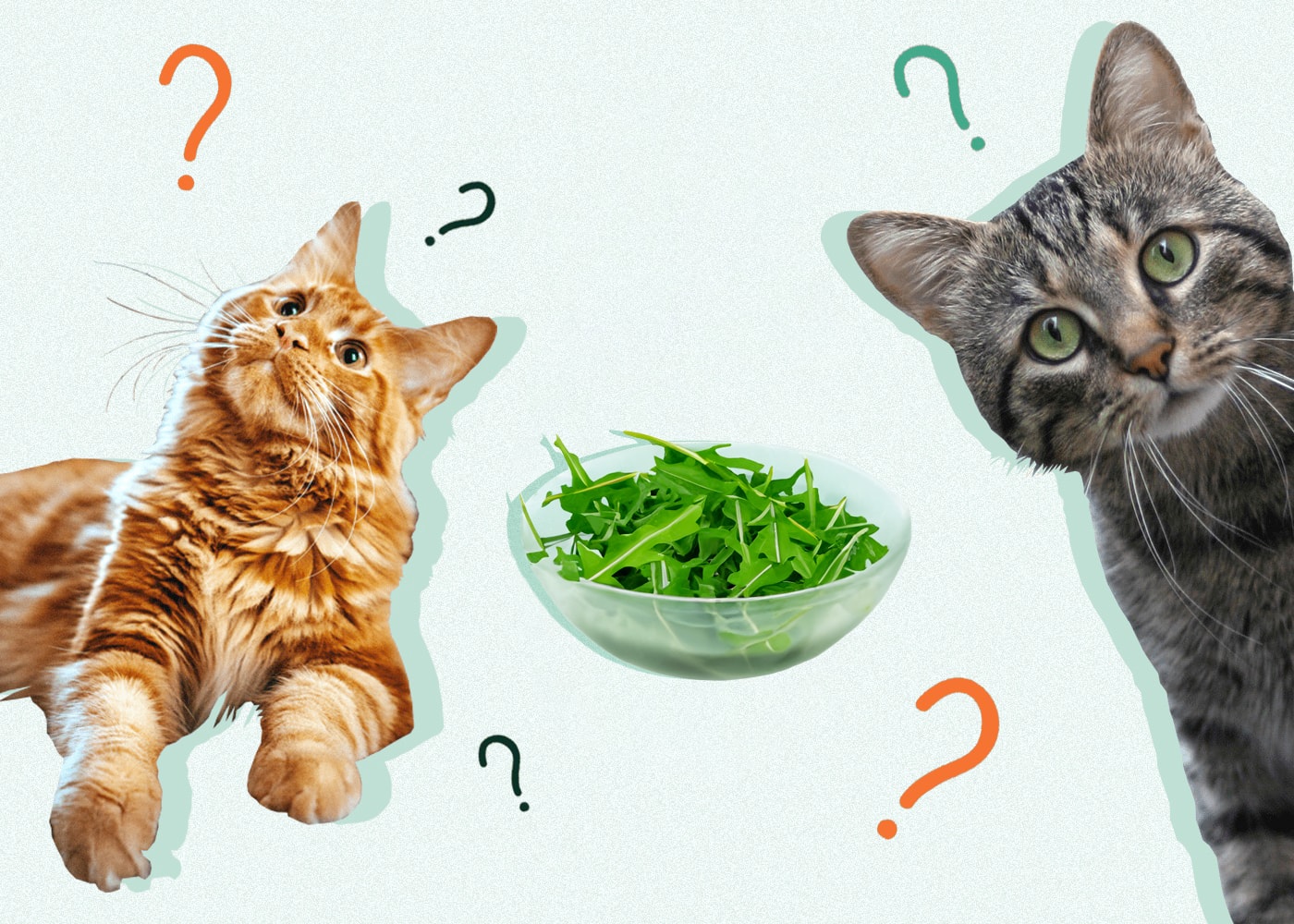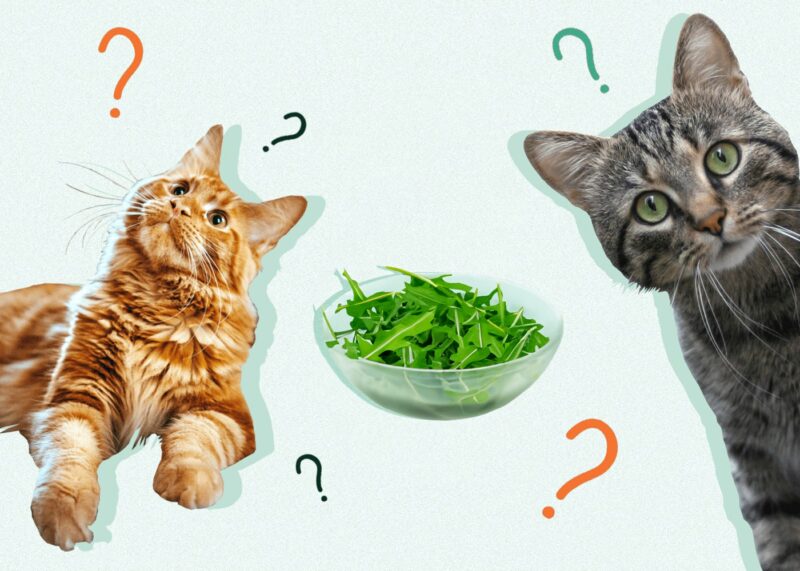Click to Skip Ahead
Arugula is a bitter and slightly spicy plant that we often put in salads. With its increasing popularity in health food recipes, it’s common to wonder if it’s safe and healthy to serve to your cat.
The short answer is yes. Your cat can eat arugula, but there are several things to consider before making it a permanent part of their diet. Keep reading while we discuss feline nutrition and any arugula-related health concerns. We’ll also go over how much and how often you should serve it to keep your cat healthy and happy.

Is Arugula Bad for My Cat?
You might hear other people refer to arugula as salad rocket, rucola, rucoli, and several other names. The plant they refer to is common in the United States and picked when it’s young to add to salads. It’s non-toxic to cats and shouldn’t cause any problems. However, cats are strict carnivores and do not need much plant matter in their diet.
Feeding too much arugula or any plant fibers can cause an upset stomach in your cat, leading to diarrhea and even vomiting. If you don’t wash it well, the arugula can have residual pesticides containing heavy metals and other ingredients that can harm your cat. If there is any salad dressing on the leaf, it could render it unhealthy and unsuitable for your pet.

Is Arugula Good for My Cat?
Let’s take a look at some of the nutrients present in arugula that make it worth sharing with your cat on occasion.
Calcium
Calcium is an essential nutrient required by cats and many other animals. Your pet will get most of the calcium from animal sources like bones, fish, organ tissue, and milk. However, a small amount can come from leafy greens, like arugula.
Calcium helps keep your cat’s teeth and bones strong. It helps with muscle contraction, including the heart, and it helps with digestion and milk production when nursing.
Folic Acid
Folate or folic acid is another vital nutrient that you can find in arugula. It helps your cat synthesize DNA, form red blood cells, aid in digestion, boost the immune system, and more. You can find folic acid in many foods.

Potassium
Potassium works together with sodium to regulate several body functions. Your cat requires potassium for the proper functioning of the nerves and heart. Potassium imbalances are common in cats with kidney disease.
Vitamins & Antioxidants
There are plenty of vitamins and antioxidants in arugula that are beneficial to your cat. They are essential for a properly functioning immune system. They also protect the body against free radical damage.
Fiber
Fiber can help balance your cat’s digestive system, especially for cats with frequent constipation or diarrhea. It helps reduce the frequency of these problems by maintaining the correct amount of water in the digestive system, preventing it from becoming too dry or runny. Fiber can also help reduce the risk of colon cancer by expelling toxic chemicals faster.

Low Sugar
One more positive benefit of feeding your cat arugula is that it is low in sugar and will not contribute to weight gain. Overweight cats are a major concern in America, with as much as 80% in need of a diet. It’s better to find foods that will help eliminate the problem.

How Can I Feed My Cat Arugula?
Most cats like to chew on grass, which helps with digestion, so it shouldn’t be hard to get your cat to try it. Ensure that you wash it well, and if they enjoy it, only provide them with a couple of leaves per week. Remember that most of your cat’s diet should come from animal proteins.
- NO MESS - The 360° tray on this cat food and water bowl set has a raised design to catch and...
- WHISKER FRIENDLY - Shallow and wide metal containers with flat bottoms ensure your kitty can enjoy...
- CHEW-SAFE MATERIALS - Kittens and cats love chewing on silicone and soft rubber - but it's a choking...
Learning about what your cat can and cannot eat is a crucial part of keeping them happy and healthy! Choosing a bowl to serve cat-friendly foods in is another important decision pet owners face. Satisfy the specific needs of your cat with the innovative design of the Hepper NomNom Cat Bowl. Learn why it’s our (and our cats!) favorite food and water dish here.
At Catster, we’ve admired Hepper for many years and decided to take a controlling ownership interest so that we could benefit from the outstanding designs of this cool cat company!
Summary
Arugula can be a nice change of pace from the cat grass and catnip that your pet usually chews on, especially if you grow it in your home garden and don’t need to worry about pesticides. It’s healthy to feed your cats on occasion, and it is non-toxic, so if you catch your cat eating some behind your back, there is no cause for concern.
We hope you enjoyed our look into the safety of this green vegetable and found the answers you need.
Featured Image Credit: Pixabay












